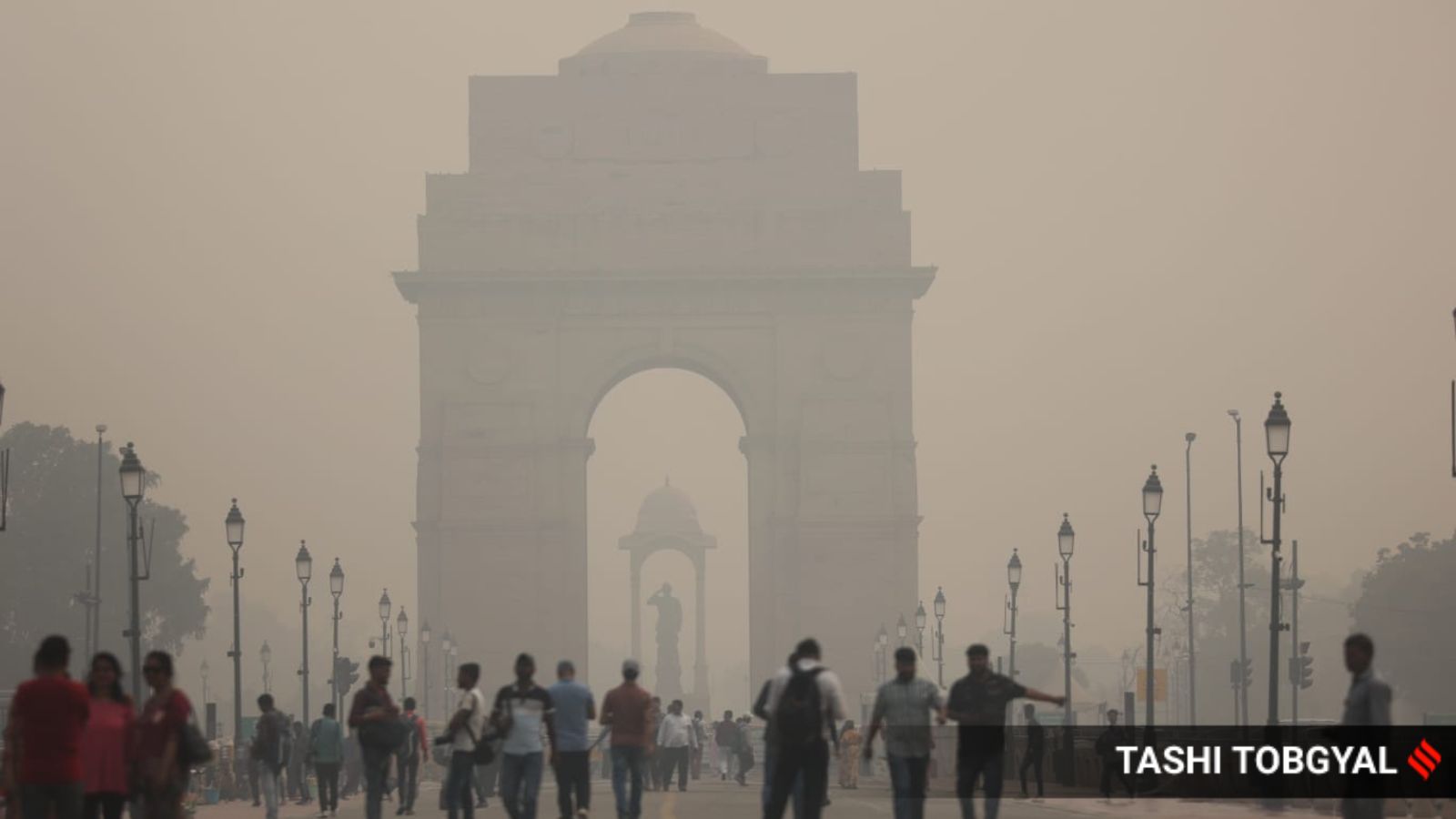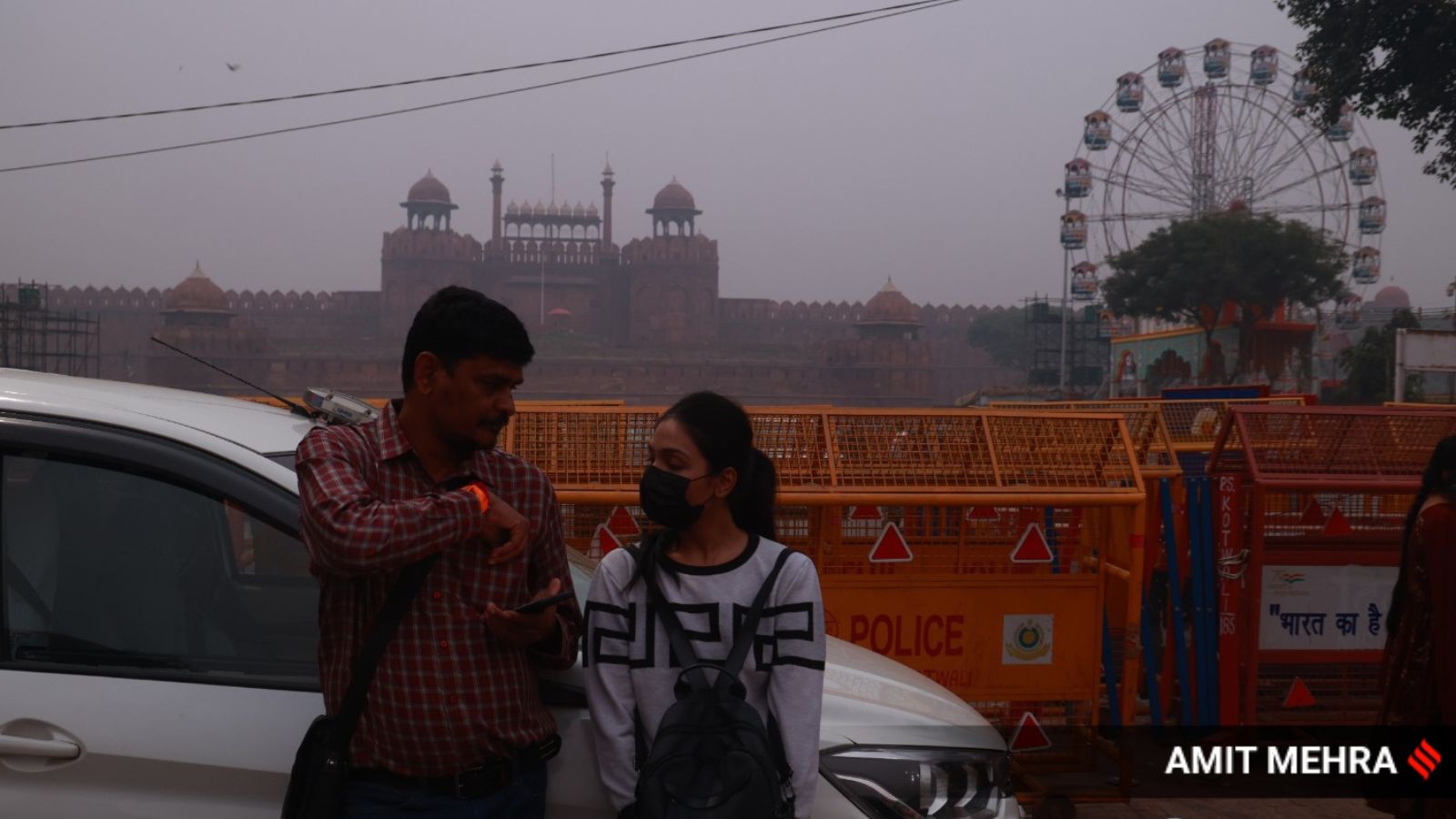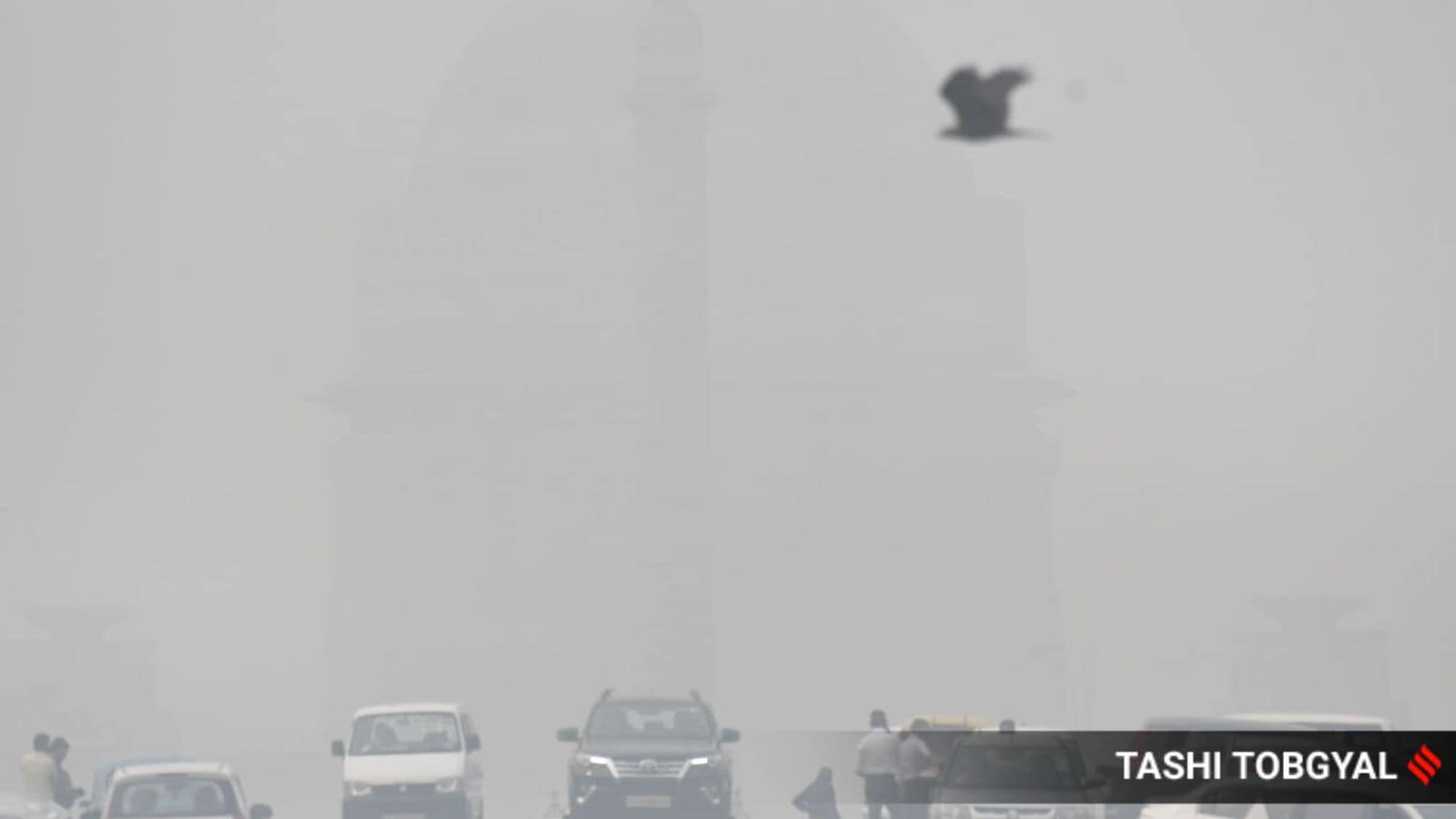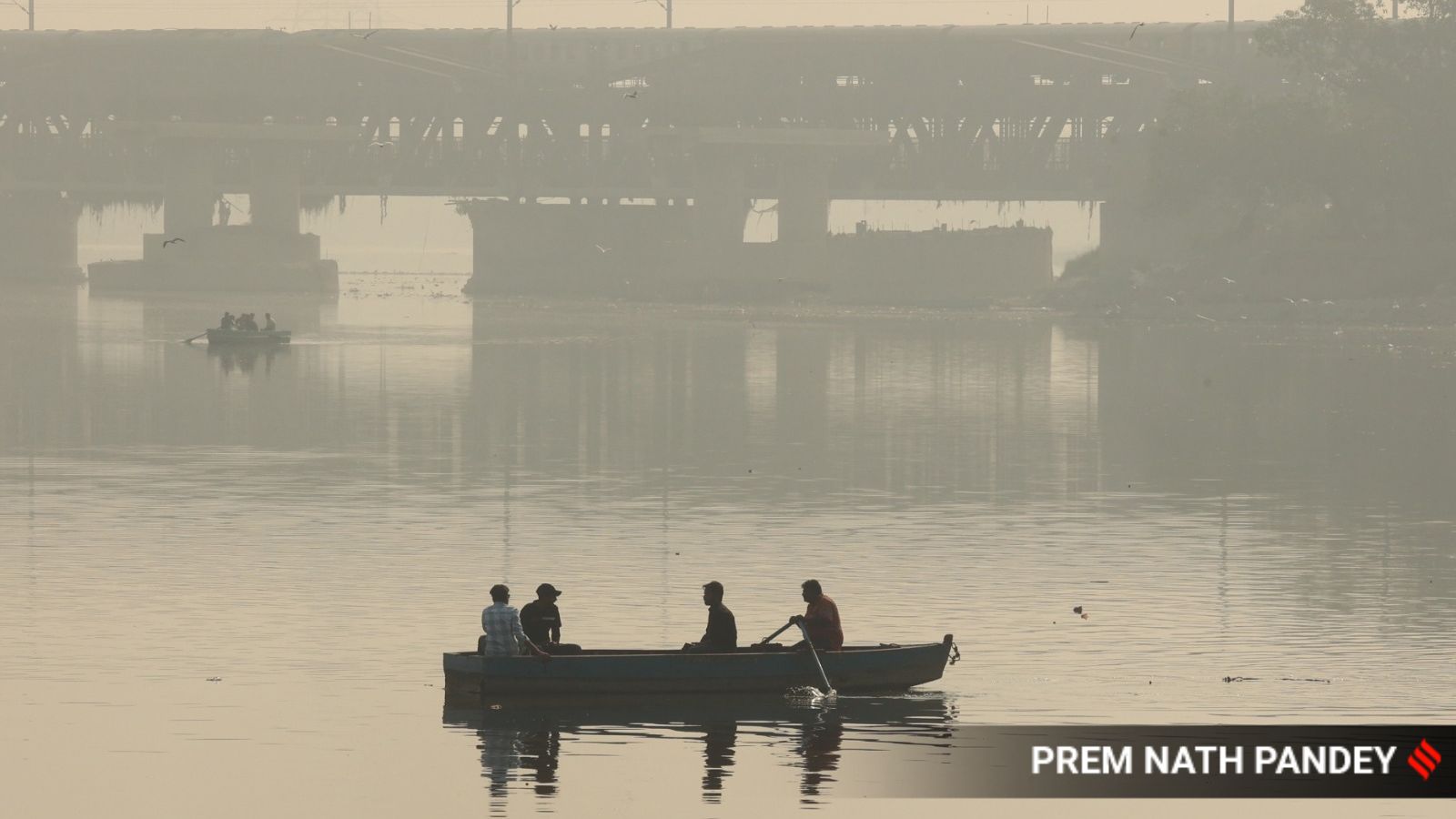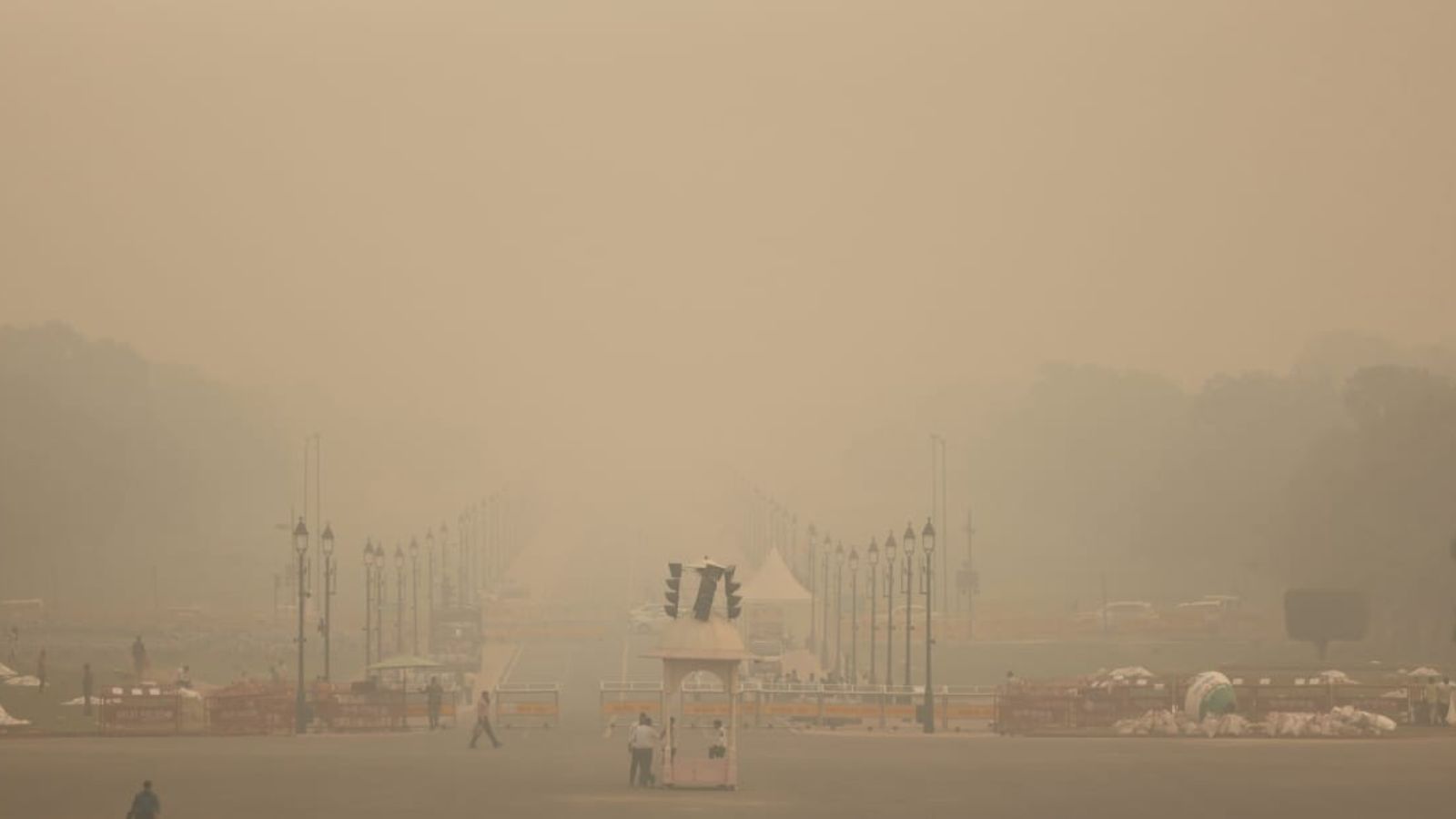Smoke, dust and a dash of fumes — As AQI hits ‘severe’, here is what’s in Delhi’s air
Kuldeep Srivastava, scientist at the India Meteorological Department (IMD), said visibility at 7 am at the Safdarjung weather station was 500 m, with shallow fog. It improved marginally to around 700 m at 2.30 pm. At Palam, visibility remained around 1,000 m from 7 am to 3 pm.
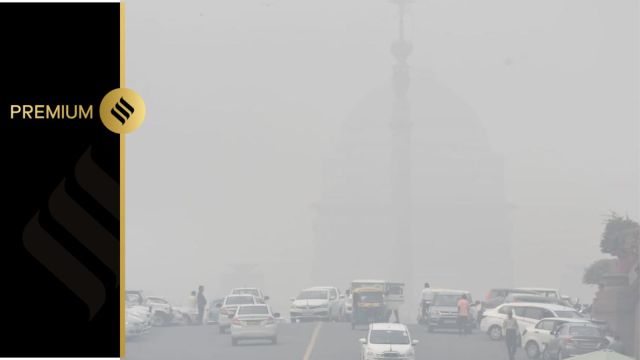 The Kartavya Path, India Gate and the Rashtrapati Bhavan are seen shrouded in thick smog, as the air quality further deteriorated in the capital on Thursday. (Express Photo by Tashi Tobgyal )
The Kartavya Path, India Gate and the Rashtrapati Bhavan are seen shrouded in thick smog, as the air quality further deteriorated in the capital on Thursday. (Express Photo by Tashi Tobgyal ) For the first time this season, Delhi’s air quality plummeted to hit the ‘severe’ category on Thursday. A cocktail of factors — low wind speed and intrusion of smoke from stubble burning — added to the impact of local emissions. This resulted in the air quality consistently worsening through the day from an average of 351 at 10 am to touch 402 at 5 pm. By 9 pm, it had deteriorated further to 418.
Pollutants suspended in the air gave the city a sepia tint, keeping visibility poor all day.
Kuldeep Srivastava, scientist at the India Meteorological Department (IMD), said visibility at 7 am at the Safdarjung weather station was 500 m, with shallow fog. It improved marginally to around 700 m at 2.30 pm. At Palam, visibility remained around 1,000 m from 7 am to 3 pm.
Since fog is formed when water vapour condenses and relative humidity was high in the morning hours, shallow fog may have formed, Srivastava said. But humidity levels had fallen to around 55% in the afternoon. “Calm conditions are prevailing. At Palam, winds were from the northwest; at Safdarjung, there were easterly winds. The speed was just 2 to 3 kmph at both stations,” Srivastava said.
Gufran Beig, founder project director SAFAR, and chair professor, National Institute of Advanced Studies, said, “The contribution of stubble burning is high, with a high fire count. Weather conditions have also become favourable for accumulation of pollutants. Low visibility is on account of intrusion of particles. Winds are calm even at a height of half a kilometre from the ground, and that is resulting in the suspension of particles and low visibility… From around this time of the year, wind direction changes and becomes north-northwest. The temperature is not that low, but major factors now are transport level wind direction and speed that is bringing pollutants into Delhi — stubble-related emissions travel at half a km to one km above the surface.”
Wind speed of 10-12 kmph can help disperse pollutants. But when the wind direction is from opposite sides, that can also result in pollutants not dispersing, officials said. With warm temperatures, the air tends to become warm and rises, resulting in dispersion of pollutants.
While strong winds or rainfall may have helped to clear the air, neither are on the forecast for the next few days. According to a forecast issued by the Air Quality Early Warning System for Delhi, wind speed is likely to be around 4 to 10 kmph on Friday with shallow fog in the morning, while it is likely to be around 6 to 8 kmph on Saturday and Sunday.
Other parts of the NCR also recorded AQI in the ‘severe’ category — at 5 pm, the AQI in Greater Noida was 414, while it was 415 in Jind.
Stubble burning share may rise
According to data from the Indian Agricultural Research Institute, while Punjab saw 1,921 instances of crop residue burning on Wednesday — the fourth day in a row that the count was over 1,000 — the Punjab Remote Sensing Centre said Thursday’s report would be delayed.
The Decision Support System developed by the Indian Institute of Tropical Meteorology said contribution of biomass burning to PM 2.5 levels in Delhi on Wednesday was 18.31%, up from 7.175% on Tuesday. It estimated that the contribution on Thursday is likely to be around 22%, that on Friday is likely to be around 21.32%, and that on Saturday could be around 15.115%. The Central Pollution Control Board identified PM 2.5 as the main pollutant in Delhi on Thursday.
Data from SAFAR shows that last year, the daily peak contribution of stubble burning to PM 2.5 levels in Delhi was 34% on November 3, while it was 48% in 2021, 42% in 2020, and 44% in 2019. This year, data from SAFAR is not available.


